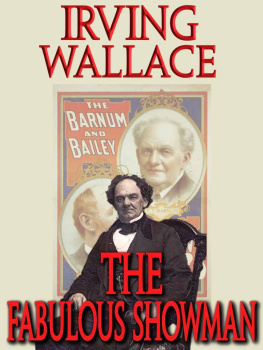THE COUNCIL
OF THE
NAVY RECORDS SOCIETY
1917-1918
separator
PATRON
THE KING
PRESIDENT
THE RIGHT HON. LORD GEORGE HAMILTON, G.C.S.I.
VICE-PRESIDENTS
Corbett, Sir Julian S. , F.S.A.
Custance, Admiral Sir Reginald N. , G.C.B., K.C.M.G., C.V.O., D.C.L.
Firth, Professor C. H. , LL.D., F.B.A.
Gray, Albert , K.C., C.B.
COUNCILLORS
Atkinson, C. T.
Bethell, Admiral Hon. Sir A.E. , K.C.B., K.C.M.G.
Brindley, Harold H.
Callender, Geoffrey A. R.
Dartmouth, The Earl of , K.C.B.
Desart, The Earl of , K.C.B.
Dewar, Commander Alfred C. , R.N.
Gough-Calthorpe, Vice-Admiral The Hon. Sir Somerset A. , K.C.B., C.V.O.
Guinness, Captain Hon. Rupert E. C. , C.B., C.M.G., M.P., R.N.V.R., Ad. C.
Kenyon, Sir Frederic G. , K.C.B., D.Litt., F.B.A.
Leyland, John
Marsden, R. G.
Milford Haven, Admiral The Marquess of , P.C., G.C.B., G.C.V.O., K.C.M.G., LL.D., Ad. C.
Murray, John , C.V.O.
Newbolt, Sir Henry
Ottley, Rear-Admiral Sir Charles L. , K.C.M.G., C.B., M.V.O.
Parry, Sir C. Hubert , Bt. , C.V.O.
Pollen, Arthur H.
Richmond, Captain Herbert W. , R.N.
Robinson, Commander Charles N. , R.N.
Sanderson, Lord , G.C.B., K.C.M.G., I.S.O.
Slade, Admiral Sir Edmond J. W. , K.C.I.E., K.C.V.O.
Smith, Commodore Aubrey C. H. , M.V.O., R.N.
Tanner, J. R. , Litt.D.
SECRETARY
Lieut.-Colonel W. G. Perrin , O.B.E., R.A.F., Admiralty, S.W.
HON. TREASURER
Sir W. Graham Greene , K.C.B., Ministry of Munitions, S.W.
PREFACE
separator
The manuscript in which Phineas Pett has recorded the story of his life from his birth in 1570 to the end of September 1638, consisted originally of sixty-nine uniform quarto sheets, of which the 52nd is now lost, together with the bottom of the 14th. The handwriting is that of Phineas throughout, but marginal references on the first few pages and a note at the end'The life of Commissioner Pett's father whose place he did enjoy'have been added subsequently by Samuel Pepys, no doubt when he was making the transcript referred to below.
The first paragraph is written on a separate sheet, which, unlike the rest, has no writing on the back, and is followed by a series of subtraction sums of the form 1612 1570 giving the age of Phineas for each year from 1612 to 1640. From the differences apparent in the figures and ink it is clear that these calculations were made year by year from the time that Phineas was forty-two until he reached the age of seventy.
A close inspection of the internal construction, the handwriting, and of the ink used, leads to the conclusion that the body of the manuscript, in the form in which it has descended to us, was written up, not at short intervals, but in sections at comparatively long intervals of time. The first and largest of these, written apparently in 1612, narrates the events down to September 1610, and stops at the word 'ordered' on line 15 of ). The various anachronisms observable in the text show that these sections were written up some considerable time after the events occurred. Thus, the references to 'Sir' John Pennington in 1627 and 1628 make it clear that the events of those years were not written up before 1634.
From the great accuracy of the dates given (which have been frequently tested from contemporary sources), it is clear that Phineas kept a diary in which events were recorded as they occurred, and from which the narrative was compiled. He appears to have commenced this diary on going to Chatham in June 1600, when precise dates begin to replace the vague 'about,' 'toward the end,' &c., of the earlier paragraphs.
The narrative stops abruptly in 1638, apparently with the sentence unfinished, for there is no mark of punctuation after the last word. In 1640, when the final section seems to have been written, Pett was an old man, and it is probable that, having been interrupted at this point, the fast-gathering troubles of the State diverted his mind from the subject, or left him without sufficient energy or leisure to pursue it.
It will be noticed that towards the end the composition becomes more slovenly and the omission of words more frequent, as though the task had become burdensome and the author anxious to have done with it.
Pepys copied the whole of the manuscript into the first volume of his Miscellany with the following preface:
'A Journal of Phineas Pett, Esquire, Commissioner of the Navy and father to Peter Pett, late Commissioner of the same at Chatham, viz: from his birth Ao 1570 to the arrival of the Royal Sovereign, by him then newly built, at her moorings at Chatham; transcribed from the original written all with his own hand and lent me to that purpose by his grandson Mr. Phineas, son to Captain Phineas Pett.'
The manuscript afterwards came into the possession of George Jackson, who was Secretary of the Navy Board in 1758 and Second Secretary of the Admiralty from 1766 to 1782. Sir George Duckett (he had changed his surname in 1797) died in 1822, and ten years later his library, including a very valuable collection of naval manuscripts, was sold by auction. Fortunately the manuscripts were purchased by the British Museum after being bought in at the sale; the volume (No. IV) in which this manuscript was contained becoming Additional MS. 9298. A commonplace book (Additional MS. 9295) containing, among copies of various naval documents, an abbreviated version was purchased at the same time.
The copy of the autobiography most generally known is the early eighteenth-century transcript in the Harleian Collection (Harl. 6279). It is to this copy that writers usually refer, possibly because it is mentioned in the paper A further reason for the preference generally shown for the Harleian copy may be its more modern and more clerkly handwriting.
The Harleian transcript is not a good one. It contains few omissions, none of great importance, but mistranscriptions of individual words are very numerous and have reduced the text to nonsense in several places. It may seem strange that writers should be content to quote passages that were evidently incorrect, without looking at another copy, which was easily to be found; but whatever the reason may be, the fact is that hitherto the original has remained unidentified as such.











